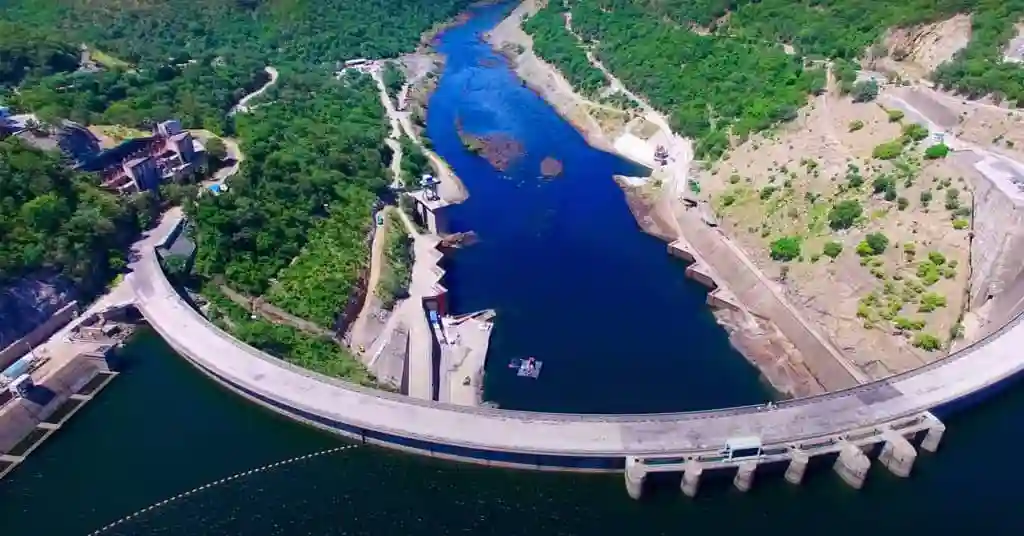The Zambezi River Authority (ZRA) on Tuesday, March 19, reported that the water level of Lake Kariba is declining, which is in contrast to its usual hydrological behaviour during this time of the year.
The ZRA attributes this phenomenon to global El Niño weather conditions. El Niño disrupts normal weather patterns, affecting precipitation and river inflow.
The headwaters of the Zambezi River have experienced reduced rainfall activity, leading to diminished inflow into Lake Kariba. Consequently, the recorded flows are below historical averages.
The Chavuma gauging station, situated in Zambia’s North-Western province, monitors river flows as the Zambezi River enters Zambia from Angola. Recent data indicates a slow increase in river flows at this station. However, it remains below the levels observed during the same period last year.
According to ZRA, on March 06 2023, the river flow at Chavuma gauging station was 992m3/s on March 06 2023, whereas on March 06 2024, it was 357m3/s. On March 19, 2023, it was 924m3/s, compared to 371m3/s recorded today, March 19, 2024. ZRA said:
The Zambezi River flow recorded on 19th March 2024 at Victoria Falls has receded from that recorded on 6th March 2024 as indicated below.
Further, the obtaining flows are significantly lower than those recorded on the same date last year.
On March 06 2023, the river flow at Victoria Falls Gauging Station (Nanas Farm Gauging Station) was 2,569m3/s on March 06 2023, whereas on March 06 2024, it was 794m3/s. On March 19, 2023, it was 2,510m3/s , compared to 751m3/s recorded today, March 19, 2024.
The impacts of low water levels at Lake Kariba include reduced power generation which results in increased load shedding; fluctuations disrupt habitats, breeding grounds, and aquatic life; ships, boats, and ferries face challenges due to shallow waters; and low water levels impact recreational activities such as fishing, boating, and wildlife safaris.
ZRA has also given a detailed explanation of the concepts of Live Storage and Dead Storage at Kariba Dam. It said:
The water from the Kariba Reservoir is transferred into each of the two power stations for power generation purposes by intakes that are located within the reservoir and near the dam wall.
Owing to the location of the intakes in terms of their height when referenced with the base of the reservoir, the waters of the Kariba Reservoir are split into two, namely, water that is situated below the height of the intakes, which is referred to as Dead Storage, and water that is located above the height of the intakes, which is referred to as Live Storage.
Dead Storage, by virtue of being below the intakes, cannot enter the intakes and hence cannot be used for power generation, while Live Storage, by virtue of being above the intakes, enters the power stations through the intakes and hence can be used for power generation.
It is possible to have a scenario where Live Storage can be completely exhausted while Dead Storage continues to be available in the reservoir.
Currently, Kariba Dam has a Live Storage of 9.17 BCM which represents 14.16% of the possible 65 BCM of water. ZRA further explained:
The Kariba Dam Reservoir at full capacity can store 181 Billion Cubic Meters (BCM) of water. Of this total amount, 116 BCM would be Dead Storage while 65 BCM would be Live Storage. The Dead Storage remains constant while the maximum possible Live Storage is 65 BCM.
However, the actual Live Storage amount may be less depending on several factors including the occurrence of rainfall which influences the level and volume of Zambezi River inflow into the Lake, evaporation from the Lake and utilization of the obtaining Live Storage by the two Power Stations.
These factors influence the volume of available Live Storage in the Kariba Dam’s Reservoir (Lake Kariba).
Currently, the Reservoir at the obtaining lake level of 477.54 meters above Mean Sea Level has a Live Storage of 9.17 BCM which represents 14.16% of the possible 65 BCM of water.
More: Pindula News

